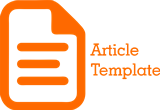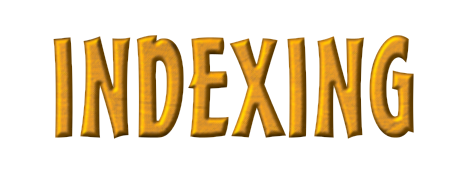The The Use of Augmented Reality Diorama Media in Natural and Social Sciences Subjects for Fourth Grade Elementary School
Abstract
Fourth-grade elementary students learn Natural and Social Sciences thanks to the pedagogical effects of employing Augmented Reality (AR) diorama media. The study utilizes descriptive qualitative methods to determine how students respond cognitively, conceptually and emotionally to learning environments based on AR technology. The author collected data using interviews combined with observations which involved a descriptive analysis for learner performance alongside participation monitoring. AR dioramas create multi-sensory learning conditions which help students interact directly with contextualized educational content to explore scientific and social phenomena better. The technology improved student motivation and created individualized learning paths at the same time that it supported education practices built on principles of Universal Design for Learning (UDL). The study exposed two main hurdles to implementation: restrictions from technology usage combined with the necessity to properly integrate learning methods. The research findings emphasize that teachers should mediate between students and instructional programs through strategic implementation. The study confirms that thoughtfully implemented AR diorama media functions as an effective transformative tool for educational development by connecting novel methodologies with intentional educational practices.
References
Afifah, S. M. N., Pratama, A., Setyaningrum, A., & Mughni, R. M. (2023). Inovasi media pembelajaran untuk mata pelajaran ipas. Cahya Ghani Recovery.
Afnan, M. Z., & Puspitawati, R. P. (2024). Exploration of biological concept understanding through augmented reality: A constructivism theory approach. JPBI (Jurnal Pendidikan Biologi Indonesia), 10(3), 1139-1147. http://dx.doi.org/10.22219/jpbi.v10i3.36896
Alfhandy, P., Ismaun, I., Hikmah, N., & Arham, Z. (2024). The Effectiveness of The Use of Diorama Teaching Aids on Students Interest and Learning. Journal of Biological Science and Education, 6(1), 1-10. https://doi.org/10.31327/jbse.v6i1.2191
Ali, E. M. (2023). and Abiotic Components of Marine Ecosystem. Marine Ecosystems: A Unique Source of Valuable Bioactive Compounds, 3, 80-108. https://doi.org/10.2174/97898150519951230301
Anderson, L. W., & Krathwohl, D. R. (2015). Kerangka Landasan Untuk Pembelajaran, Pengajaran, dan Asesmen Revisi Taksonomi Bloom. Pustaka Belajar.
Arsyad, A. (2016). Media pembelajaran. Raja Grafindo Persada.
Ateş, H. (2025). Integrating augmented reality into intelligent tutoring systems to enhance science education outcomes. Education and Information Technologies, 30(4), 4435-4470. http://dx.doi.org/10.1007/s10639-024-12970-y
Atmojo, I. R. W., Ardiansyah, R., Pramesthi, A. D., & Adi, F. P. (2025). The effect of project-based learning model based on differentiation learning on creative thinking skills in science learning. Multidisciplinary Science Journal, 7(4), 2025151-2025151. https://doi.org/10.31893/multiscience.2025151
Azuma, R., R. T. (1997). “A Survey of Augmented Reality.” In Presence: Teleoperators and Virtual Environments, 6(4 August), 355–385. https://doi.org/10.1162/pres.1997.6.4.355
Buckingham, D. (2003). Media education and the end of the critical consumer. Harvard educational review, 73(3), 309-327. https://doi.org/10.17763/haer.73.3.c149w3g81t381p67
Bulathwela, S., Pérez-Ortiz, M., Holloway, C., Cukurova, M., & Shawe-Taylor, J. (2024). Artificial intelligence alone will not democratise education: On educational inequality, techno-solutionism and inclusive tools. Sustainability, 16(2), 781. https://doi.org/10.3390/su16020781
Calle-Bustos, A. M., Juan, M. C., García-García, I., & Abad, F. (2017). An Augmented Reality Game to Support T herapeutic Education for Children with Diabetes. PLoS ONE, 12(9), 1–24. https://doi.org/https://doi.org/10.1371/journal.p on e.0184645
Campbell, N. A., Reece, J. B., Urry, L. A., Cain, M. L., Wasserman, S. A., Minorsky, P. V., & Jackson, R. B. (2010). Biologi Jilid 3. Edisi 8.(Terjemahan oleh DT Wulandari). Erlangga. Jakarta, 486.
Choiroh, L. Z., Renaningtyas, P. C., Sudarti, S., & Wuryaningrum, R. (2024). Improving Student Learning Outcomes through Implementation Diorama Media Based on Problem Based Learning. EDUCARE: Journal of Primary Education, 5(1), 47-60. http://dx.doi.org/10.35719/educare.v5i1.268
Daryanto, D. (2013). Menyusun modul bahan ajar untuk persiapan guru dalam mengajar. Yogyakarta: Gava Media, 9-23.
Farikhatin, N., Eka Subekti, E., & Hanum, A. (2024). Pengaruh Model Pembelajaran Project Based Learning dengan Media Diorama terhadap Hasil Belajar Peserta Didik. Jurnal Inovasi, Evaluasi Dan Pengembangan Pembelajaran (JIEPP), 4(1), 9–15. https://doi.org/10.54371/jiepp.v4i1.365
Gita, S. N., Panai, A. H., Abdullah, G., Kudus, & Isnanto. (2024). Pengaruh model pembelajaran discovery learning berbantuan media diorama terhadap hasil belajar IPA siswa kelas V SD Negeri 20 Pulubala. EduInovasi: Journal of Basic Educational Studies, 4(3), 1885–1895. https://doi.org/10.47467/edu.v4i3.5219
Hanggara, Y., & Qohar, A. (2024). The Impact of Augmented Reality-Based Mathematics Learning Games on Students' Critical Thinking Skills. International Journal of Interactive Mobile Technologies, 18(7). http://dx.doi.org/10.3991/ijim.v18i07.48067
Hanifah, C. S., & Setyasto, N. (2024). 3D Diorama Learning Media on the History of the Independence of Indonesia to Improve Learning Outcomes in Social Studies Learning. Mimbar PGSD Undiksha, 12(1), 47-56. https://doi.org/10.23887/jjpgsd.v12i1.72828
Herianto, E. (2017). Makhluk Hidup dan Ekosistem. Istana Media.
Hermawan, A., & Hadi, S. (2024). Realitas Pengaruh Penggunaan Teknologi Augmented Reality dalam Pembelajaran terhadap Pemahaman Konsep Siswa. Jurnal Simki Pedagogia, 7(1), 328–340. https://doi.org/10.29407/jsp.v7i1.694
Jannah, R., & Ginting, R. (2023). Career Women's Communication Patterns in Maintaining Family Harmony in The Office of The Ministry of Religion Medan City. PERSPEKTIF, 12(2), 405-412. https://doi.org/10.31289/perspektif.v12i2.8315
Jiang, Z., Shen, X., Zhang, J., & Wang, H. (2023, November). A Flipped Classroom Teaching Design Based on Constructivist Theory. In 2023 IEEE International Conference on Signal Processing, Communications and Computing (ICSPCC) (pp. 1-5). IEEE. http://dx.doi.org/10.1109/ICSPCC59353.2023.10400378
Kusuma, A. T. A., Wenda, D. D. N., & Permana, E. P. (2024). Pengembangan media diorama berbasis audiovisual pada pembelajaran IPA materi sistem pencernaan manusia bersama kelas V SD Negeri 1 Purwoasri. Pendas: Jurnal Ilmiah Pendidikan Dasar, 9(3), 348-356. https://doi.org/10.23969/jp.v9i3.16178
Lidyasari, A. T., Rachmawati, I., Costa, A. D., & Wanyi, P. (2022). How are the cognitive, affective, and psychomotor levels of primary school learners living in suburban area of Yogyakarta based on career development. Jurnal Prima Edukasia, 10(2), 130-137. http://dx.doi.org/10.21831/jpe.v10i2.48061
Maknun, D. (2017). Ekologi Populasi, Komunitas, Ekosistem Mewujudkan Kampus Hijau, Asri, Islami dan Ilmiah. Nurjati Press.
Mayer, R. E. (2001). Multimedia Learning. terjemahan: Teguh W. Utomo. Pustaka Pelajar.
Narayan, K. G., Sinha, D. K., & Singh, D. K. (2023). Ecological Concept. In Veterinary Public Health & Epidemiology: Veterinary Public Health-Epidemiology-Zoonosis-One Health (pp. 43-48). Singapore: Springer Nature Singapore. https://doi.org/10.1007/978-981-19-7800-5
Nurtiansyah, R., & Wardhani, D. S. (2023). Pengembangan media pembelajaran diorama dengan menggunakan model project based learning untuk meningkatkan pemahaman konsep siswa kelas V SD materi ekosistem. COLLASE (Creative of Learning Students Elementary Education), 6(6), 1047–1054. https://doi.org/10.22460/collase.v6i6.17440
O’Connor, K. (2022). Constructivism, curriculum and the knowledge question: tensions and challenges for higher education. Studies in Higher Education, 47(2), 412-422. https://doi.org/10.1080/03075079.2020.1750585
Piaget, J. (2002). Tingkat Perkembangan Kognitif. Gramedia.
Prastowo, A. (2015). Panduan Kreatif Membuat Bahan Ajar Inovatif. Diva Press.
Putri, D. O., Pandra, V., & Sujarwo, S. (2023). Penerapan Media Diorama dalam Pembelajaran Organ Gerak Hewan untuk Mengukur Hasil Belajar IPA Siswa. Journal of Elementary School (JOES), 6(2), 461–467. https://doi.org/10.31539/joes.v6i2.7443
Rahman, S. (2021). Pentingnya Motivasi Belajar dalam Meningkatkan Hasil Belajar. PROSIDING SEMINAR NASIONAL PENDIDIKAN DASAR.
Ritonga, Y., & Zunidar, Z. (2025). The Effect of Earth Rotation Diorama Learning Media on the Critical Thinking Ability of Science Subjects in State Elementary School. Scaffolding: Jurnal Pendidikan Islam dan Multikulturalisme, 7(1), 289-302. https://doi.org/10.37680/scaffolding.v7i1.7083
Rudin, R. B., Raharjo, T. J., & Utomo, K. B. (2021). The Effect of Project-Based Learning Making Dioramas from Inorganic Wastes on Elementary School to Enhance Student's Conceptual Understanding and Creativity. Journal of Primary Education, 10(3), 297-307. https://doi.org/10.15294/jpe.v10i3.49927
Rustianingsih, R., & Nisa, A. F. (2020). Penerapan Metode Pembelajaran Visualization Auditory Kinestetic (Vak) Pada Pembelajaran Ipa Untuk Mengakomodasi Kesiapan Dan Gaya Belajar Siswa Kelas V. TRIHAYU: Jurnal Pendidikan Ke-SD-An, 7(1), 1006–1013. https://doi.org/10.30738/trihayu.v7i1.8399
Sadiman, A. S. (2011). Interaksi dan Motivasi Belajar Mengajar. PT. Rajagrafindo Persada.
Santhi, N. L. K. W., Asri, I. G. A. A. S., & Manuaba, I. B. S. (2020). Social studies learning with visualization, auditory, kinesthetic (vak) learning model assisted by diorama media increases student knowledge competence. International Journal of Elementary Education, 4(3), 281-290. https://doi.org/10.23887/ijee.v4i3.25853
Sitepu, E. N. (2022). Media Pembelajaran Berbasis Digital. Prosiding Pendidikan Dasar, 1(1), 242–248.
Sudjana, N. (2010). Dasar-dasar Proses Belajar Mengajar (XV). Sinar Baru Algensindo.
Trudgill, S. (2007). Tansley, A.G. 1935: The use and abuse of vegetational concepts and terms. Ecology 16, 284—307. Progress in Physical Geography: Earth and Environment, 31(5), 517–522. https://doi.org/10.1177/0309133307083297
Verawati, E. (2023). Keseimbangan Ekosistem di Pantai Palu Kuning Muncar Banyuwangi. CONSERVA, 1(2), 58-65. https://doi.org/10.35438/conserva.v1i2.195
Wijaya, D. C., & Mustika, D. (2022). Pengembangan Media Diorama Tema Ekosistem Untuk Kelas V Sekolah Dasar. IJoIS: Indonesian Journal of Islamic Studies, 3(2), 125–147. https://doi.org/10.59525/ijois.v3i2.112
Copyright (c) 2025 Journal La Edusci

This work is licensed under a Creative Commons Attribution-ShareAlike 4.0 International License.








